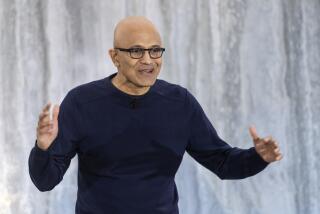Microsoft and Toyota to build cloud-based telematics system for cars
- Share via
Microsoft Corp. and Toyota Motor Corp. announced Wednesday that they were teaming to build a cloud-based telematics system that would handle GPS, energy management and multimedia applications in Toyota cars.
The system will be built on Microsoft’s Windows Azure cloud-computing platform and will be available in some Toyota cars beginning in 2012, said Celeste Migliore, a Toyota spokeswoman. In cloud computing, software for such functions as navigation run on remote servers connected to the car via the Internet.
“We’ll start out with our Toyota hybrid and plug-in vehicles in 2012, but we are keeping all of our options open,” Migliore said. “The system could make its way to other vehicles and lines.”
Toyota also makes vehicles under the Lexus and Scion brands.
As part of Microsoft and Toyota’s partnership in developing the telematics system, the companies will invest a total of about $12 million in Toyota Media Service Co., a Toyota-owned subsidiary that handles the automaker’s digital information services. Microsoft and Toyota did not say how the investment would be split between the two companies.
The goal of the project is to build a “complete global cloud platform by 2015 that will provide affordable and advanced telematics services to Toyota automotive customers around the world,” Microsoft and Toyota said in a joint statement.
The system will also have smart-grid features that Toyota is testing in Japan that will allow cars to interact with homes and other mobile devices so that users can control and plan their energy consumption.
Toyota believes that “as electric and plug-in hybrid vehicles become more popular, such systems will rely more on telematics services for achieving efficient energy management,” the company said in its statement.
Microsoft has had some recent success with telematics systems, such as its Microsoft Sync system in Ford vehicles that allows users to make phone calls, get directions, manage multimedia libraries and tap into data from smartphones and computers.
Steve Ballmer, Microsoft’s chief executive, said in the statement that the system’s development “further validates the power of the cloud.”
nathan.olivarezgiles@latimes.com
More to Read
Inside the business of entertainment
The Wide Shot brings you news, analysis and insights on everything from streaming wars to production — and what it all means for the future.
You may occasionally receive promotional content from the Los Angeles Times.









